
Edward M. Rosenfeld, “Southwest View of Old Swedes Church,” Wilmington, Delaware, April 20, 1934. (Historic American Building Survey, Library of Congress.) The church was built between 1698 and 1699.
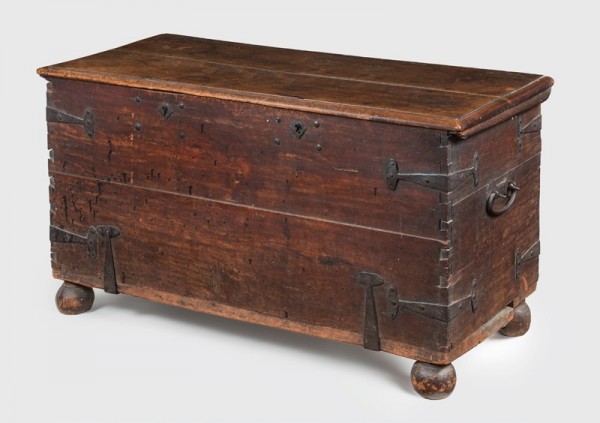
Chest, probably made by Christian Joransson (1664–1716), Wilmington, Delaware, 1700–1713. Walnut and tulip poplar. H. 24 1/2", W. 48", D. 20 3/4". (Courtesy, Trinity Episcopal Church; photo, Gavin Ashworth.)
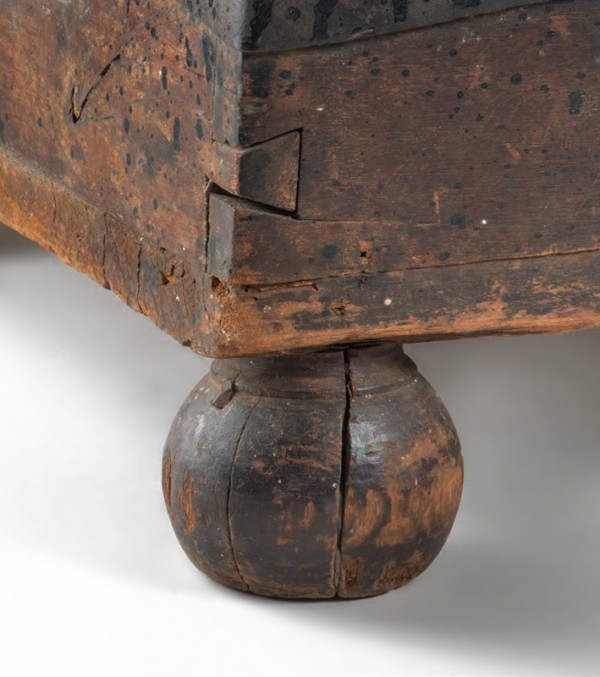
Detail showing an original ball foot on the chest illustrated in fig. 2. (Photo, Gavin Ashworth.)
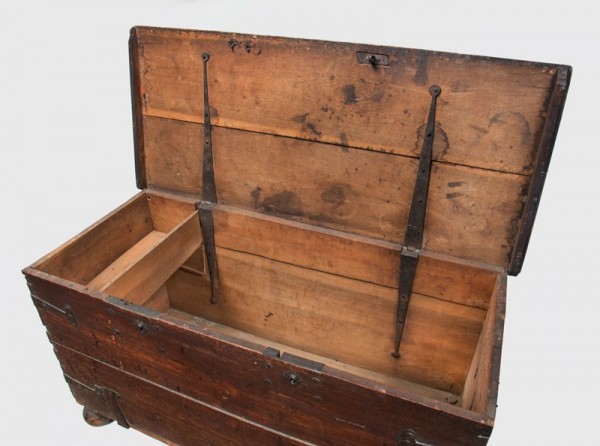
Interior view of the chest illustrated in fig. 2. (Photo, Gavin Ashworth.)

Detail showing the locks on the front of the chest illustrated in fig. 2. (Photo, Gavin Ashworth.)

Armchair with later hinged shelf, probably Wilmington, Delaware, 1710–1730. Walnut. H. 47", W. 27 3/4", D. 29". (Courtesy, Trinity Episcopal Church; photo, Gavin Ashworth.)
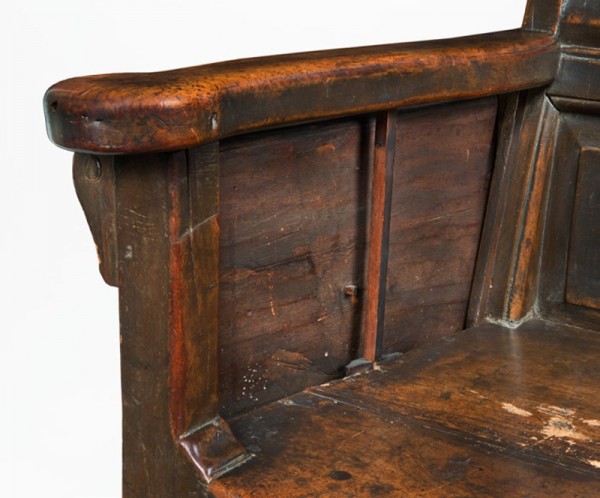
Detail of the writing arm support and underside of the arm of the armchair illustrated in fig. 6 showing evidence of grooves cut for a panel.
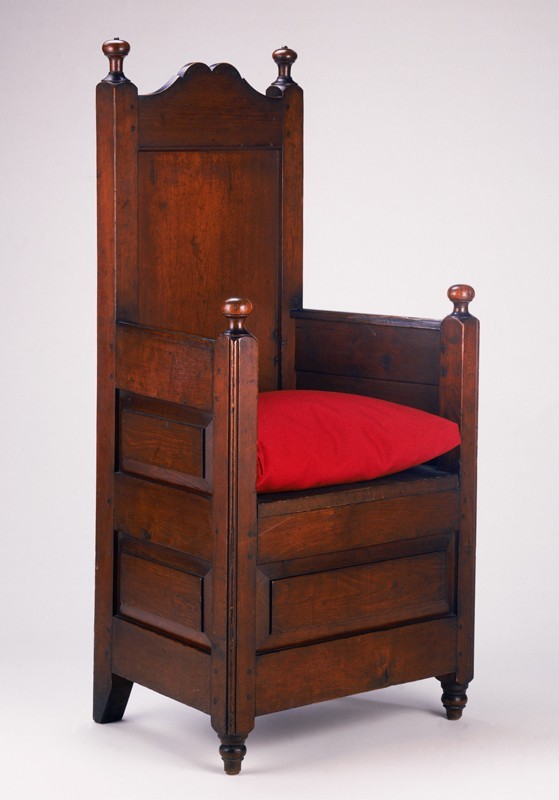
Armchair, southeastern Pennsylvania, 1715–1735. Walnut with tulip poplar. H. 48 1/2", W. 23 1/2", D. 18". (Courtesy, Philadelphia Museum of Art.)
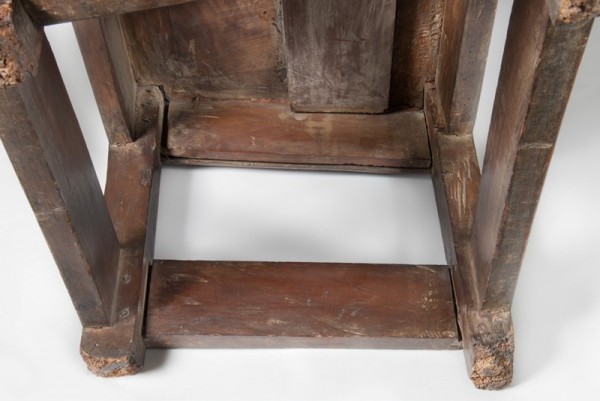
Detail of the underside of the seat of the armchair illustrated in fig. 6, showing the original seat boards, a later board reinforcement, and evidence of drawer runners on the legs. (Photo, Gavin Ashworth.)
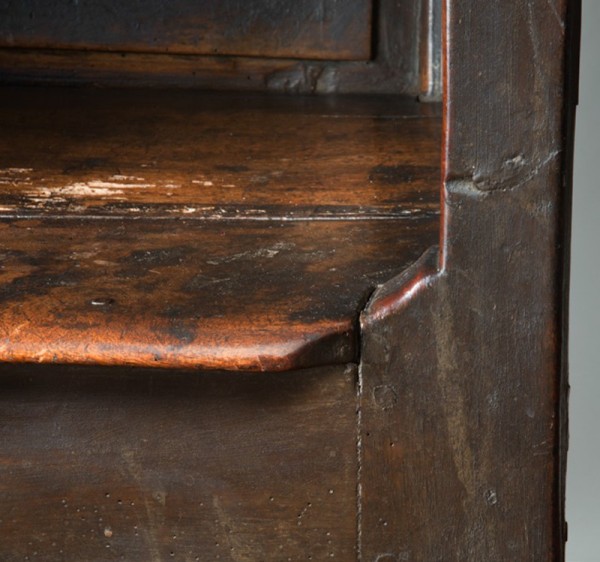
Detail showing the seat overhang and arm support of the armchair illustrated in fig. 6. (Photo, Gavin Ashworth.)
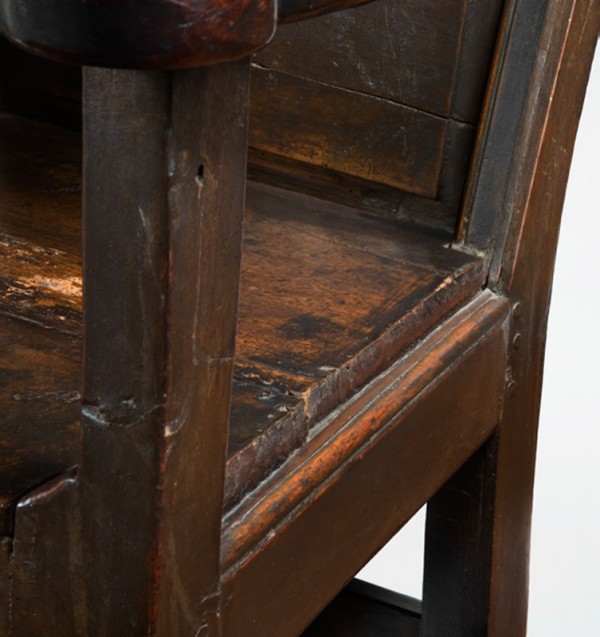
Detail showing the cut seat and filled channel for a panel on the armchair illustrated in fig. 6. (Photo, Gavin Ashworth.)
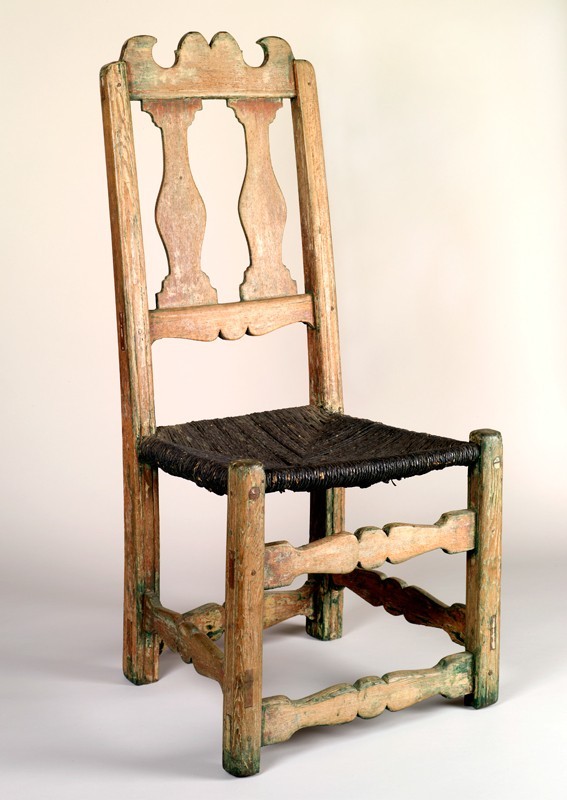
Side chair, probably Wilmington, Delaware, 1730–1750. Sassafras. H. 40 1/2", W. 18 1/4", D. 20". (Courtesy, Winterthur Museum; photo, Lazlo Bodo.)

Armchair, Limburg region of the Netherlands, 1764. (Courtesy, Rijksmuseum.)
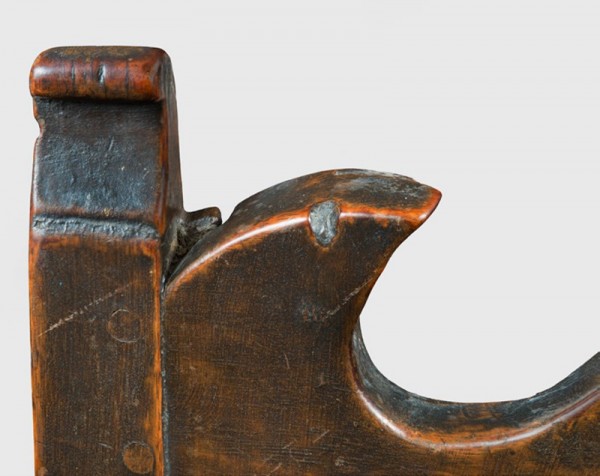
Detail of the rabbeted joint securing a stile and the crest rail of the armchair illustrated in fig. 6. (Photo, Gavin Ashworth.)
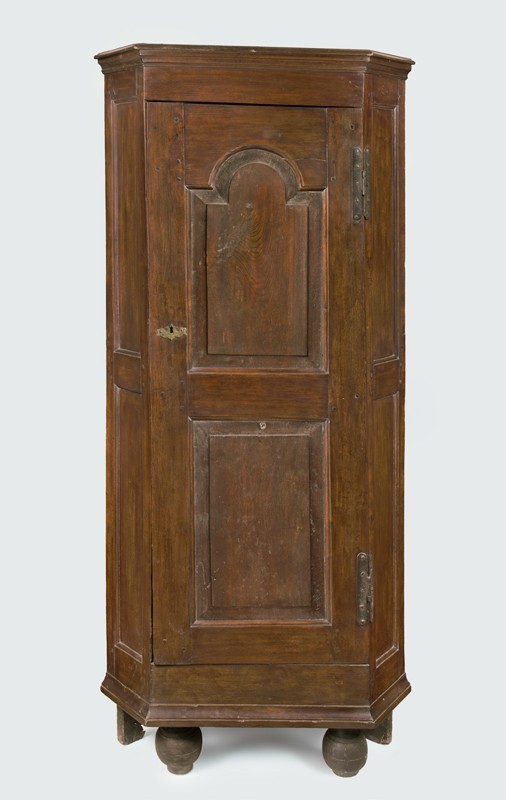
Corner cupboard, probably Wilmington, Delaware, 1710–1740. Walnut with tulip poplar. H. 67 1/2", W. 28 1/2", D. 21". (Private collection; photo, Gavin Ashworth.)
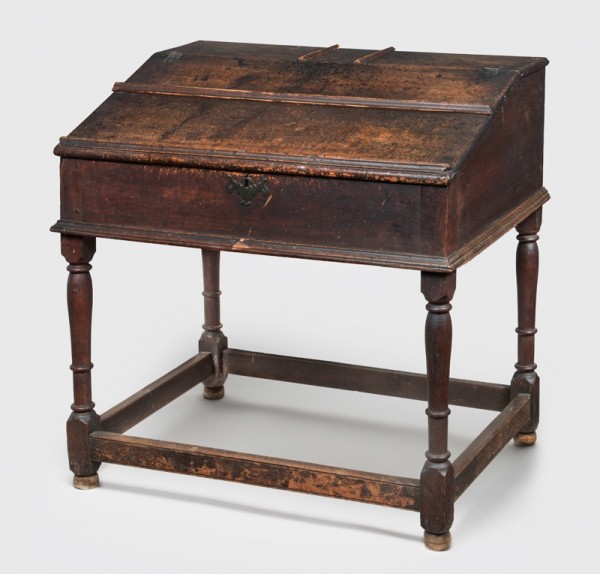
Reading desk, probably Wilmington, Delaware, 1710–1740. Walnut with tulip poplar and hard or yellow pine. H. 36", W. 35 1/4", D. 26". (Courtesy, Trinity Episcopal Church; photo, Gavin Ashworth.) The second (middle) book stop on the desk lid and the two molding strips on the center top, all made of a resinous pine, are not original. Use of wire nails to secure them suggests they were added after about 1875. Other features of note include the iron lid hinges, which are especially well made, raising the question of whether they were made in the Delaware Valley or imported from Europe. The desk maker recessed slightly the underside edges of the lid along the front and sides. Presumably, this refinement was to smooth the surface that contacts the frame and perhaps to reduce the visible thickness of the lid. He also oriented the grain of the pigeonhole sides horizontally, so that end-grain shows. This departure from the norm may signal his lack of familiarity with construction details of this furniture form. Similarly, he reinforced the fitted interior by driving a peg through the exterior side of the case into the end of the low shelf that runs side‑to‑side.
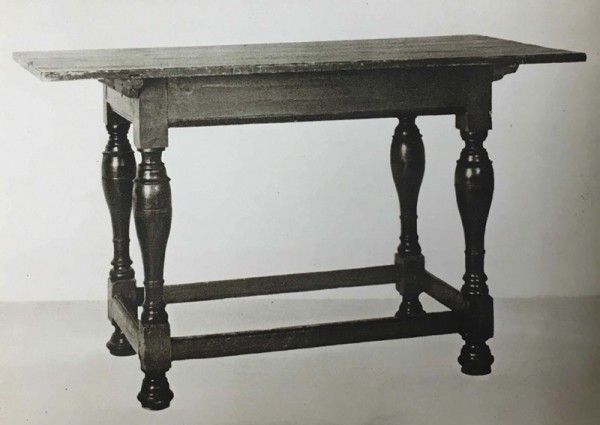
Swedish table illustrated in Sigurd Erixon, Möbler och heminredning i svenska bygder (Stockholm: Nordiska museets förlag, 1925.)
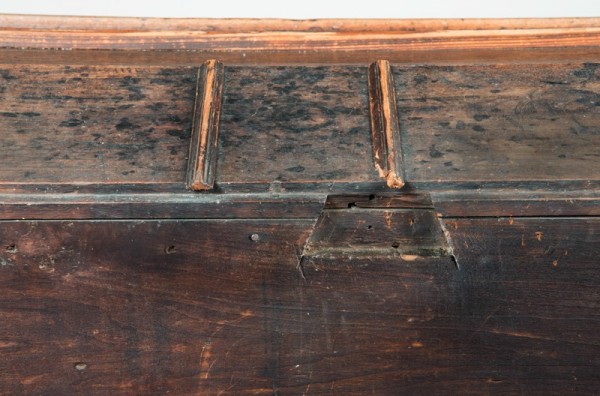
Detail showing the backboard and dovetailed recess of the reading desk illustrated in fig. 16. (Photo, Gavin Ashworth.)

Table, probably England, 1710–1730. Oak. H. 27 1/2", W. 29 1/2", D. 16 3/4". (Courtesy, Trinity Episcopal Church; photo, Gavin Ashworth.)
